Gigabyte GeForce GTX 1660 Review
Gigabyte GeForce GTX 1660 Review
One of the best value Full HD GPUs available
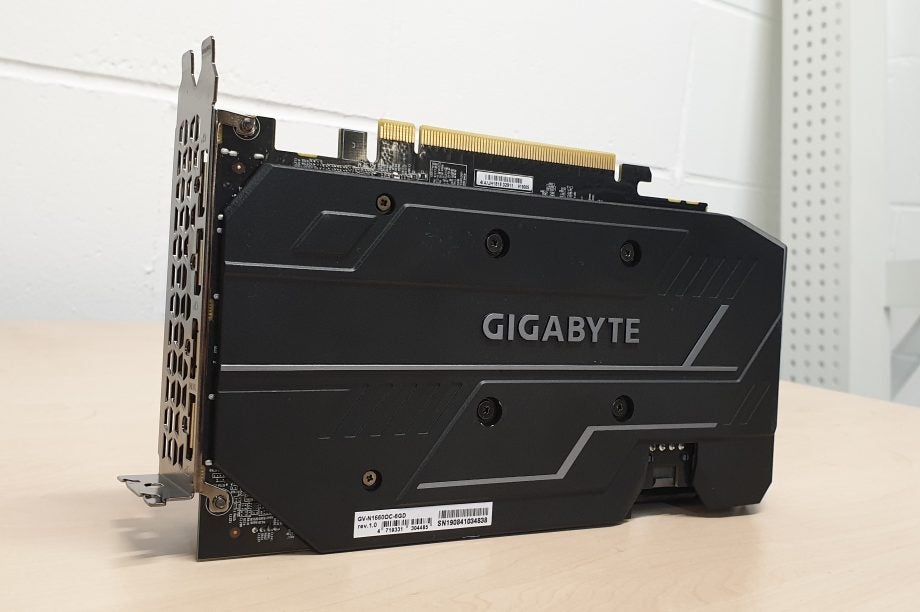
Verdict
The Gigabyte GTX 1660 offers superb value for Full HD gaming, but you may be tempted to spend a little more for the slightly more powerful GTX 1660 Ti.
Pros
- Superb value for Full HD gaming
- Adaptive shading gives modern games a performance boost
- Incredible optimisation for battle royale games
Cons
- The slightly more expensive GTX 1660 Ti offers better value
Key Specifications
- Review Price: £199
- New TU116 arhitecture
- 1408 CUDA Cores
- 6GB GDDR5 VRAM
- 1530MHz base clock speed
- 1785MHz boost clock speed
What is the Gigabyte GTX 1660?
The Gigabyte GTX 1660 is Nvidia’s new mid-range graphics card. While top-tier GPUs are now hurtling past the £1000 price point, the GTX 1660 offers an impressive Full HD performance for just £199.
Like its slightly more powerful sibling the GTX 1660 Ti, the GTX 1660 uses Nvidia’s new TU116 architecture instead of the older Pascal design used for the GTX 1050 and GTX 1060 cards.
Nvidia has developed this architecture to achieve a calculated balance between performance, power and cost. Chuck in the exciting Turing shader innovations, which intelligently optimises the GPU’s efficiency, throw in the promise of ray tracing support in the future, and you’ve got a excellent graphics performance for a very good price.
The GTX 1660 has a very relatable issue though – the more powerful 1660 Ti is hogging the spotlight. With just a £70-odd price difference separating the two, the GTX 1660 is under a lot of pressure to deliver a comparable performance in order to be deemed a worthwhile alternative.
Related: Best Graphics Cards 2019
Gigabyte GTX 1660 – Specs and technology
The following table displays all the specs for the GTX 1660 and how it compares to Nvidia’s GTX 1050 Ti, GTX 1060 6GB, GTX 1660 Ti, GTX 1070 and RTX 2060 graphics cards. I chose these cards because they’re the most comparable Nvidia GPUs in terms of both price and specifications.
| GTX 1660 | GTX 1050 Ti | GTX 1060 6GB | GTX 1660 Ti | RTX 2060 | |
| Architecture | TU116 | Pascal | Pascal | TU116 | Turing |
| CUDA Cores | 1408 | 768 | 1280 | 1536 | 1920 |
| Base clock speed | 1530 MHz | 1290 MHz | 1506 MHz | 1500 MHz | 1365 MHz |
| Boosted clock speed | 1785 MHz | 1392 MHz | 1708 MHz | 1770 MHz | 1680 MHz |
| VRAM | 6GB GDDR5 | 4GB GDDR5 | 6GB GDDR5 | 6GB GDDR6 | 6GB GDDR6 |
| Memory bandwidth | 192 Gbps | 112 Gbps | 192 Gbps | 288 Gbps | 336 Gbps |
| TDP | 120w | 75w | 120w | 120w | 160w |
While the GTX 1660 is a Turing card like the RTX 2060, it lacks the latter’s special features such as ray tracing and DLSS. That’s no surprise given the budget price here. So how does the new TU116 architecture differ from Pascal?
Firstly, the TU116 architecture boasts the capability for more capacity, more configurable caches and improved bandwidth. But unlike with the GTX 1660, Nvidia hasn’t taken full advantage of the architecture’s potential here, keeping the majority of the specs in line with the Pascal GTX 1060 in order to keep costs down. The GTX 1660 and GTX 1060 share the same memory bandwidth, VRAM and even thermal design power.
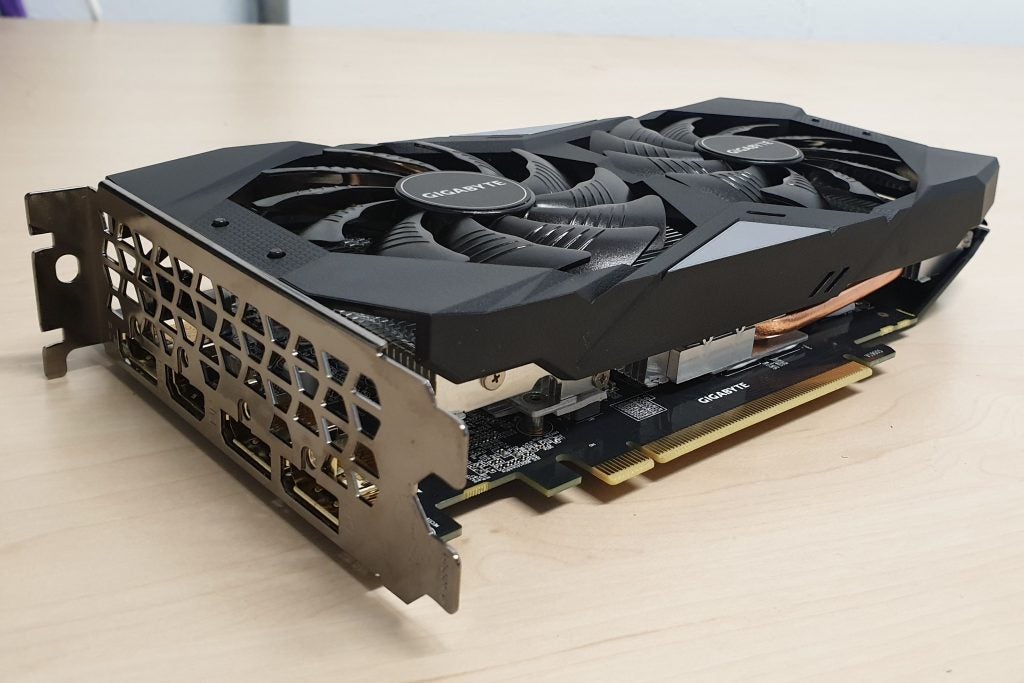
Nvidia has found room for a bump in CUDA Cores though, with the GTX 1660 flaunting a total of 1408 compared to the GTX 1060’s 1280. This increase in CUDA Cores looks to be the major factor for the increase in boosted clock speeds too, with the GTX 1660 peaking at a reasonable 1785 MHz. The GTX 1060 is only capable of 1708 MHz by comparison.
Let’s be honest, on paper the GTX 1660 doesn’t seem like a significant upgrade to the GTX 1060. Truth is though, most of the benefits of the new TU116 architecture aren’t visible on a spec sheet. One example of this is the 1.5x boost in instructions per clock. This means that while the increase in clock speed isn’t massively meaty, the improvement in efficiency should still result in a significantly superior performance.
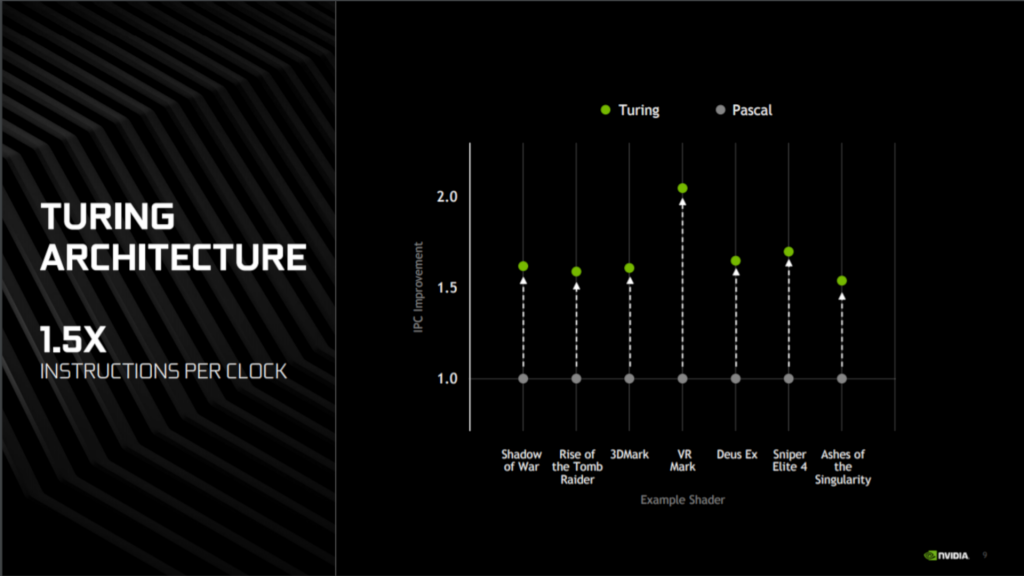
The TU116 architecture also introduces a slew of smartarse shading techniques which improve the graphics card’s efficiency by reducing the workload of the GPU without hampering the image quality.
One of these techniques is called Motion Adaptive Shading. This feature alters the shading rate according to the levels of motion on display. Think of playing a game like Forza Horizon 4 where you’re speeding through a race course – there’s little point in shading the likes of street signs and road markings in full detail when they’re nothing but a blur to the naked eye as you whizz by. And by sacrificing such needless detail, the GPU gets a tasty performance boost in return. It’s so smart it almost feels like cheating.
Content Adaptive Shading is a similar technique that also provides a performance boost by alleviating the burden on the GPU. This time though, the improved efficiency comes via an algorithm that determines the shading rate according to the “spatial and colour coherence across frames”. In plain English, this effectively means that if any object or piece of scenery is motionless and doesn’t change in appearance for long stretches of time – like a wall or the sky for instance – the GPU smartly puts in less effort shading it every single frame. This means without losing image quality.
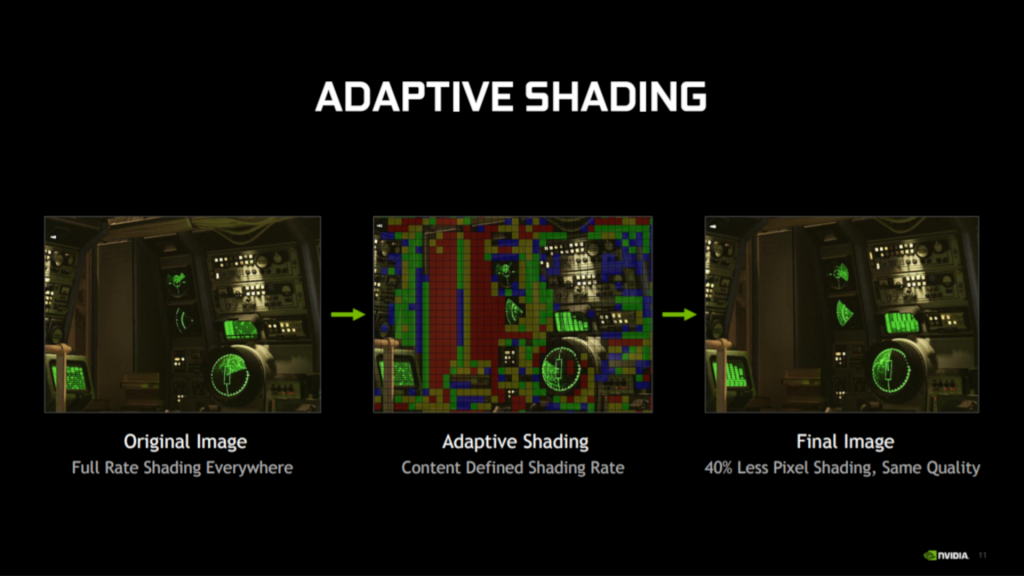
I’m a big fan of these Adaptive Shading techniques, and while they may not be as exciting as the RTX features, they’re certainly more useful than the likes of ray tracing for the average gamer. There is a caveat though: not every video game makes use of the new Adaptive Shading with Wolfenstein II: The New Colossus is the very to support the technology.
Strangely, this means modern games are more likely to receive a greater performance boost than titles release a number of years ago, since the former make use of more advanced and intricate shading techniques. Nvidia showed this on a graph, with Shadow of the Tomb Raider and Call of Duty Black Ops 4 seeing a bigger leap in performance than Fallout 4 when compared to graphics cards sporting Pascal architecture.
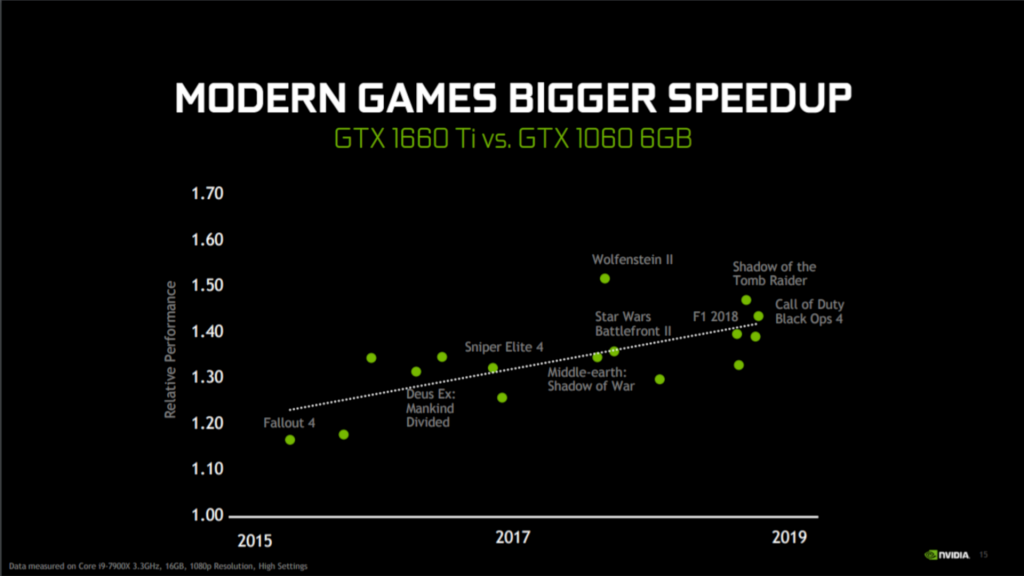
The final special power that the TU116 architecture has bestowed upon the GTX 1660 is the capability to stream video games in 4K regardless of what CPU you’re using. The GTX 1660 can even stream and broadcast simultaneously from one system, which will be a big boon for those Twitch obsessives.
Related: PNY GeForce GTX 1660 Ti Review
Gigabyte GTX 1660 – Design and connectors
Honestly, the Gigabyte GTX 1660 has a rather boring design. It has a black plastic coat, which barely covers up all the wiring and components stuffed instead. And while it has ‘Gigabyte’ written with a bright silver font on both the back and the front of the fans, there’s little other personality here. But since the graphics card is likely to be hidden in your rig, this isn’t a massive deal.
Like its performance, the design is efficient though. The dual-fan setup ensures the card never get too hot, with the peak recorded temperate of 62°C being impressively low.
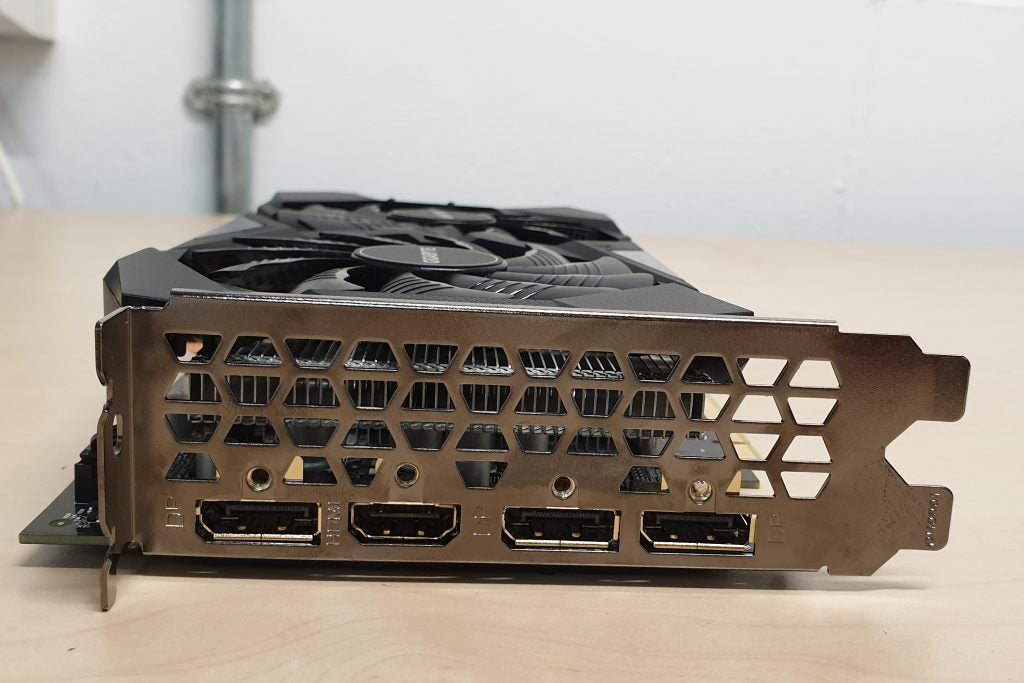
There are a decent number of connections here too, with three offerings for DisplayPort and one for HDMI. There’s no DVI port here, but that shouldn’t be an issue for the majority of people. The GTX 1660 needs an eight-pin PCle power connector to get all juiced up, so it isn’t as demanding as the likes of its more expensive RTX 2080 Ti sibling.
Related: Best Gaming Monitors 2019
Gigabyte GTX 1660 – Performance and benchmarks
The Gigabyte GTX 1660 offers a fantastic Full HD performance considering its affordable price. In every test we ran it posted better frame results than the GTX 1060 and even came close to pushing the GTX 1070 at times.
In all but the most notoriously GPU-draining titles, the GTX 1660 is capable of running games at 60 frames per second in Full HD. This performance is solid enough for all but the most competitive esports gamers. There’s only one issue here: the GTX 1660 Ti offers a better performance and doesn’t cost that much more.
I’ve also benchmarked the GTX 1060 (Founders Edition), GTX 1660 Ti (PNY) and GTX 1070 (MSI) graphics cards to give a better idea how the GTX 1660 stands up to the competition.
Testing methodology
So you know exactly what system I was using while benchmarking Gigabyte GTX 1660, I’ve listed the components down below. This is the same Trusted Reviews rig that I use for all of our latest graphics card reviews:
- Motherboard: Asus Prime Z370
- Processor: Intel Core i7-8700K (not overclocked)
- RAM: Corsair Vengeance 2666MHz, 16GB DDR4
- Cooler: Corsair H60 liquid cooler
- PSU: Corsair CX750M
- SSD: Samsung 850 EVO
- OS: Windows 10 Pro 64-bit
*Editor’s note: I haven’t included the AMD Vega cards, the RX590 and RX580, because I don’t currently have samples to hand. I will update this review once I get them back in.
Shadow of the Tomb Raider
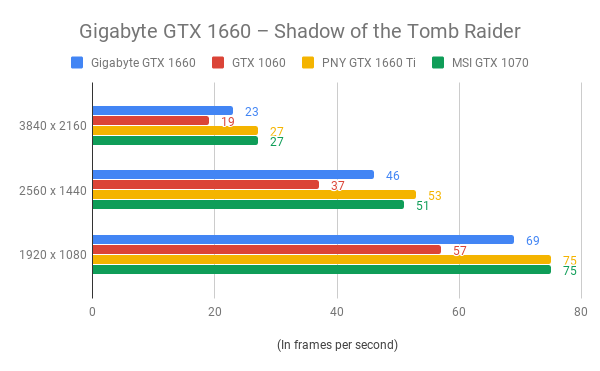
I used Shadow of the Tomb Raider for our benchmark tests as it’s one of the most visually stunning AAA games currently available. Since Nvidia claims any of its GPUs using the TU116 architecture can get a performance boost thanks to advanced shading technology, it’s even more essential to use modern video games for testing here.
The Gigabyte GTX 1660 is capable of 69fps performance with the graphic preset set to ‘Highest’ and resolution at Full HD. This sits almost bang in the middle between the the GTX 1060 and the GTX 1660 Ti, which makes sense considering the names and specs. There’s probably not enough of an improvement to coerce GTX 1060 owners into upgrading, but it’s certainly now of the best options for those who have yet to make the leap to 10-series graphics cards.
Results for Quad HD and 4K aren’t so convincing. This is no surprise though – the GTX 1660 is being touted as a budget Full HD GPU. You’ll need to pay quite a bit more to run modern games at a superior resolution.
Ghost Recon Wildlands
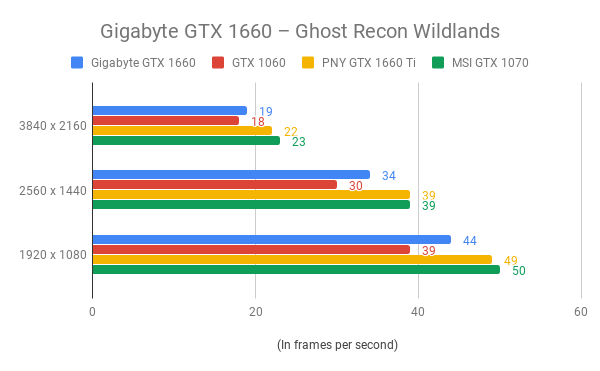
Ghost Recon Wildlands is one of the most GPU-demanding video games out there and it’s not optimised for Nvidia hardware, so it’s not too much of a shock to see that the Gigabyte GTX 1660 struggles with it. It’s certainly still playable in Full HD at 44fps, but the performance is certainly not ideal.
This is no different to other graphics card around this price, with the GTX 1660 Ti only managing an extra 5fps on average, while the GTX 1070 limited to a 6fps increase. The positive to take here is that few other games will as intensive as this open-world shooter, and the fact the GTX 1660 is capable of running it all is still a big positive.
Don’t even think about playing Wildlands in Quad HD or 4K with the GTX 1660 though, with performance looking choppy at such low average frame rates. If you’re going to be playing the likes of Wildlands on the frequent, I recommend going for a more expensive graphics card.
Dirt Rally
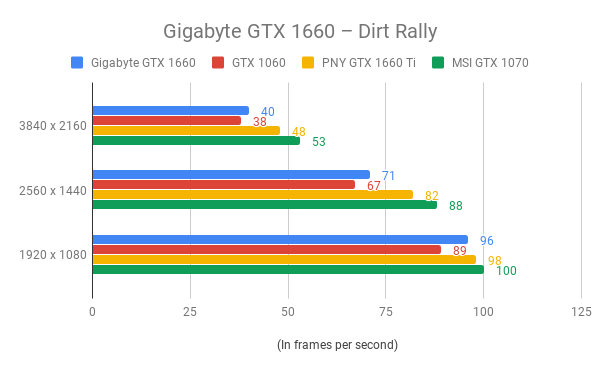
I always include Dirt Rally in our benchmark tests, as it’s a great example of a AAA game released a few years back. This means that a high benchmark result should indicate the GPU in question is a good option for playing through your backlog.
The GTX 1660 achieved an average performance of 96fps in the in-game benchmark test. This is an excellent result, with only a 2fps difference separating it from the more expensive GTX 1660 Ti. With these results, I expect GTX 1660 to blast through any video game released over 4 years ago.
The results in Quad HD were also impressive at 71fps, rocketing over the 60fps golden standard performance. The only downside here is that performance still isn’t great in 4K, but asking a budget graphics card to excel in Ultra HD is a little unfair.
Apex Legends
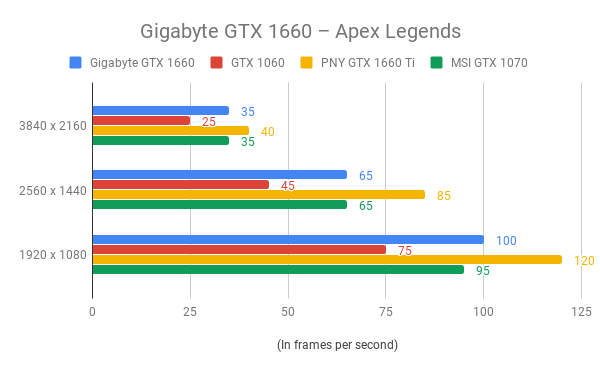
Nvidia was very keen to get its point across that graphics card using TU116 architecture to optimised to play battle-royale games such as Fortnite, PlayerUnknown’s Battlegrounds and Apex Legends. I chose the latter of the three since it’s the most recent game released.
The GTX 1660 Ti was capable of an almighty 120fps performance when playing Apex Legends in Full HD at max graphics settings. The GTX 1660 is quite a distance off that remarkable feat with an average frame rate of 100fps, but is still able to surpass the score of the GTX 1070 by 5fps which is very impressive. The GTX 1660 is also capable of a solid performance in Quad HD with a 65fps performance.
Note that since Apex doesn’t have its own in-game benchmark, I had to figure out the average via an overlayed frame rate counter. This method isn’t the most reliable solution, but at least it provides a figure from the actual game rather than a simulated programme.
3DMark Fire Strike Ultra
Benchmark results found in-game are certainly the best way to judge a graphics card performance, but it’s also useful to see what figures are spat out by dedicated benchmarking software. 3DMark’s Fire Strike Ultra simulates a video game and then sees a final result produced which can be compared with other cards.
The GTX 1660’s result of 2842 looks pretty low on paper, with even the GTX 1060 boasting a higher figure at 3021 which does not align with all the in-game benchmark results. This is probably due to the fact that the TU116 architecture gains a big performance boost from smart shading techniques, which likely isn’t factored in for these simulated tests. The GTX 1660 is all about efficiency rather than raw power after all.
This efficiency is further established with the GTX 1660’s peak power draw result of 171.9 watts. This is the lowest figure in the test, which is great news for keeping costs down when buying a PSU.
The peak temperature, meanwhile, comes in at 62°C, which is in line with all of the other Nvidia graphics cards in this test. With such a low peak temperature you don’t really need to worry about burning this GPU out – unless you start dabbling with overclocking of course.
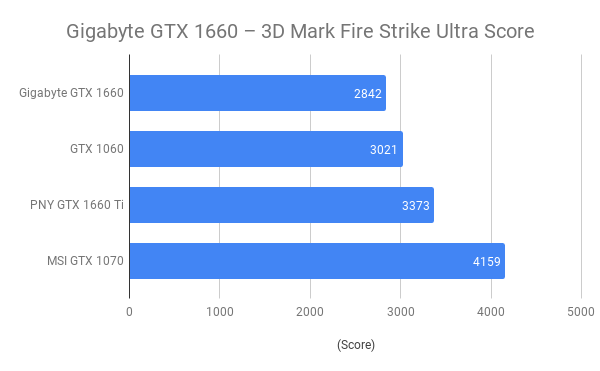
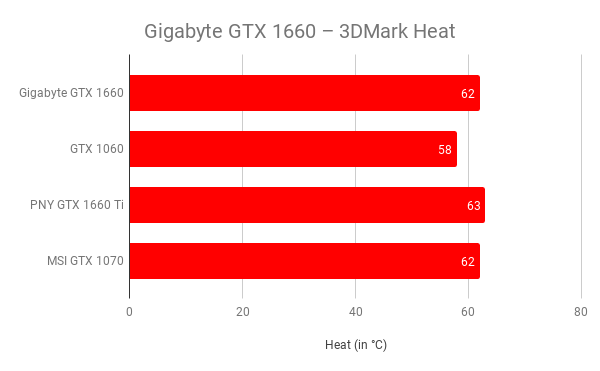
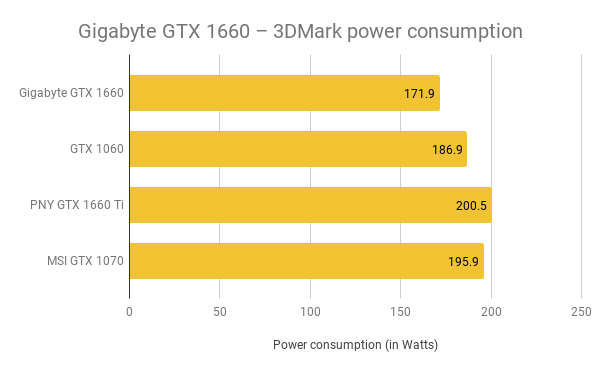
Related: Best Gaming PC 2019
Gigabyte GeForce GTX 1660 – Overclocking
I’ve previously found graphics cards with Turing architecture haven’t been very open to overclocking, with Nvidia already squeezing out as much performance power as possible. The GTX 1660 seemingly bucks this trend, as I managed to increase the clock speeds by a whopping 200MHZ. When I tried to overclock it any further, the Unigine benchmark software would become unstable and even crash.
Interestingly though, the 200MHZ overclock only resulted in a 4fps performance increase. This is disappointing, to such an extent I personally don’t think it’s even worth going through the effort. That said, I had time constraints when trying to overclock the GTX 1660, so more professional overclockers will likely see improved results, although I doubt by a significant margin.
Why buy the Gigabyte GTX 1660?
The Gigabyte GTX 1660 is another big triumph for the TU116 architecture, proving to be a fantastic value graphics card for HD gaming. With its pacey performance and competitive price, the GTX 1660 essentially makes the GTX 1060 redundant.
Does the GTX 1660 offer enough of a performance jump to be worthwhile for GTX 1060 owners to upgrade? Not really. But it’s a superb new option for first-time buyers, or for those yet to make the move to a 900 Series card.
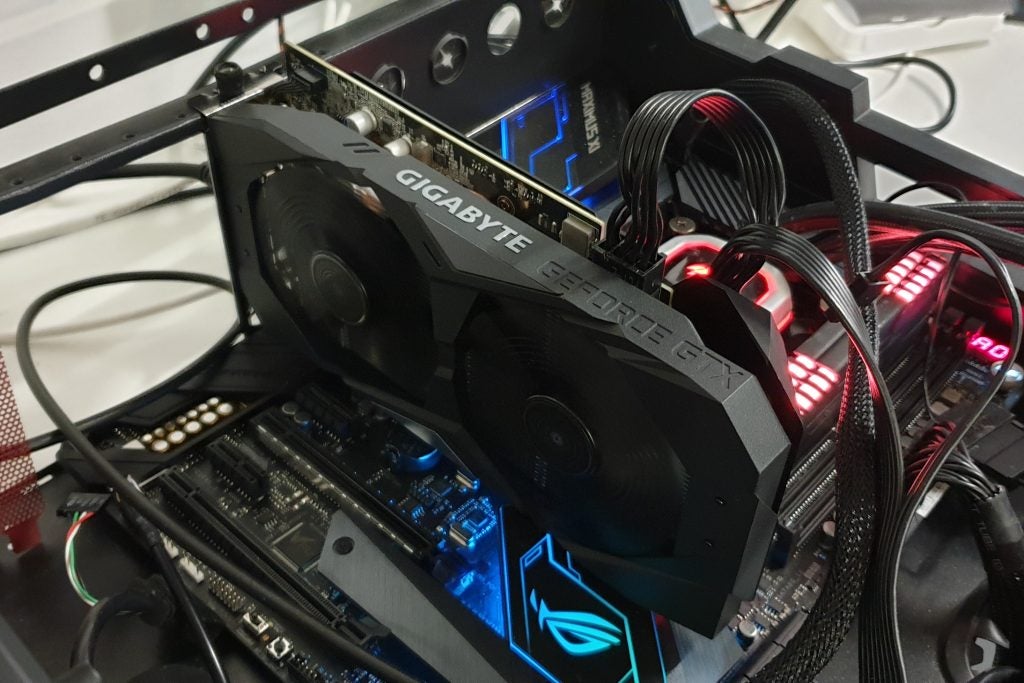
This is an especially great card for battle royale fans, with the GTX 1660 offering a similar performance to a GTX 1070 card, despite the latter being significantly more expensive.
The only doubt I have about the GTX 1660 is that it may be priced too close to the GTX 1660 Ti. I still think the latter offers the best value for Full HD gaming, so it’s incredibly tempting to spend the extra £60 for a better performance. But if you’re looking to be ruthless with your budget when building a new system, then the GTX 1660 is still an unquestionably fantastic option.
Verdict
The Gigabyte GTX 1660 offers superb value for Full HD gaming, but you may be tempted to spend a little more for the slightly more powerful GTX 1660 Ti.


